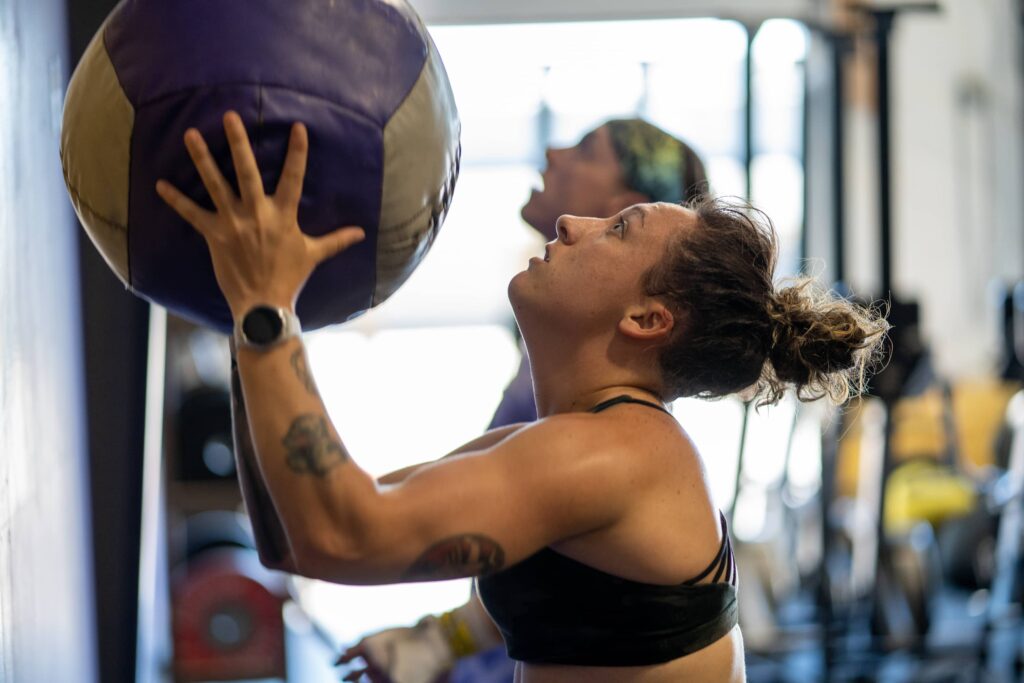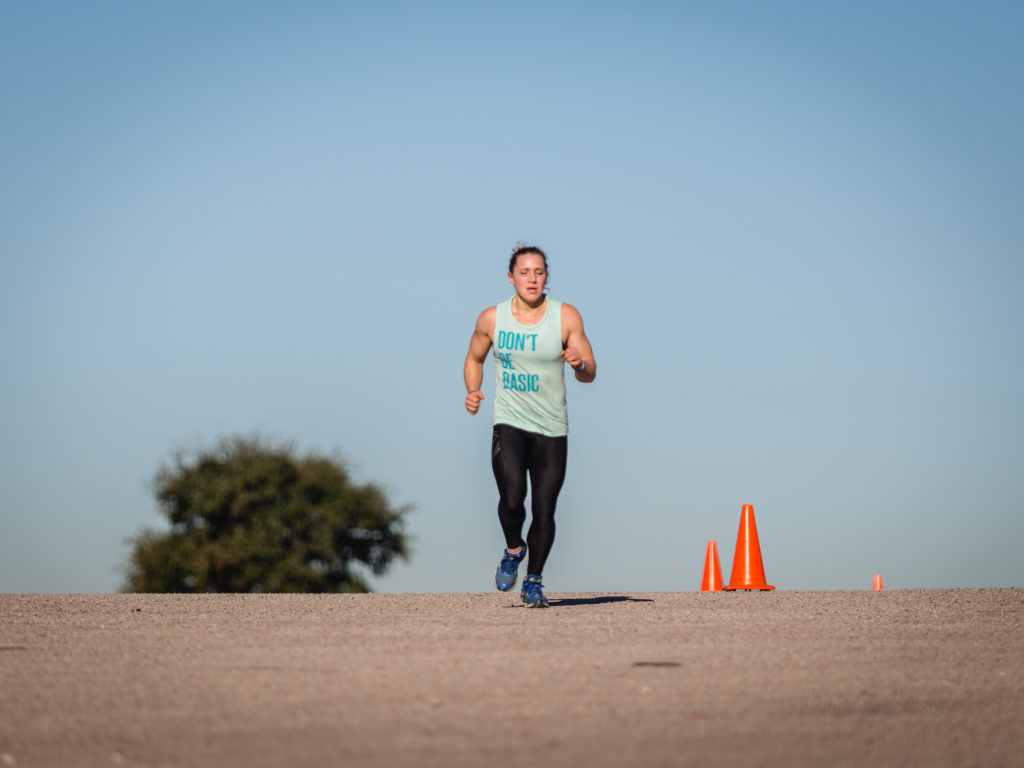GET IN THE WATER!
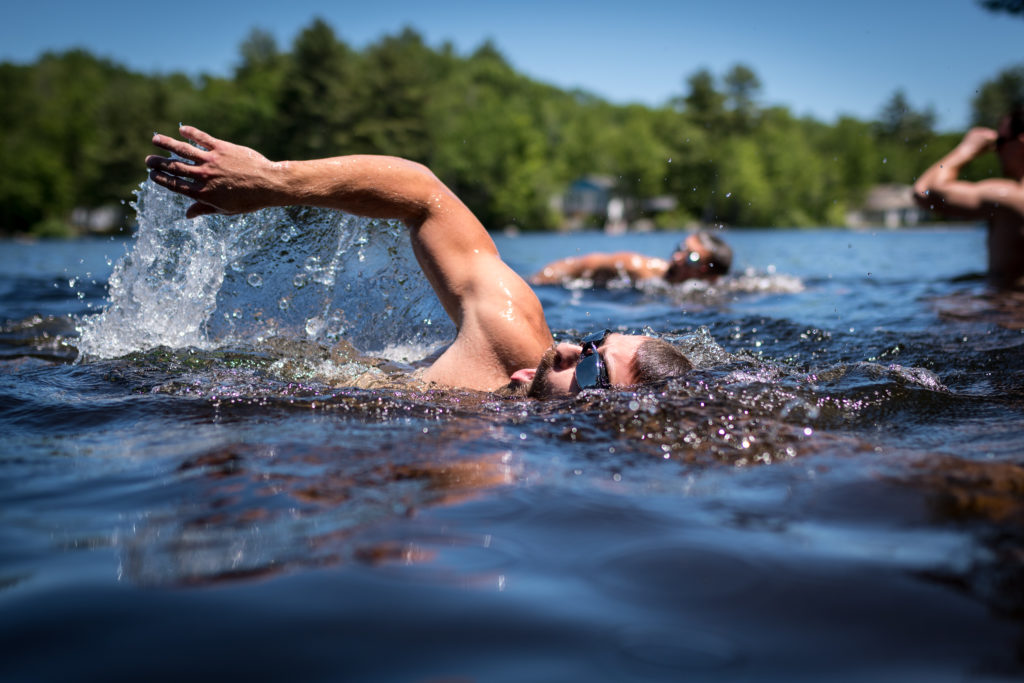
You don’t swim enough. There, I said it. Even though I constantly preach that more training is not necessarily better, this is one of the very few exceptions where I feel confident that you could add in a moderate swim session on top of what you’re already doing. I’m saying that 1-3 times a week you could add in a swim and it will not cause you to prolong your recovery. I actually believe swimming on top of the program you follow, if done in the correct volume and intensity, will help flush out your lymphatic system, increase blood flow, raise your HRV, lower your resting heart rate, and help you sleep. Yes, these are bold claims. No, I do not have concrete science as to why. However, I’ll tell you my ideas and show you exactly what I’ve found when adding in swimming to not only my own regiment but several other high-level athletes I have coached.
But…
What does swimming require?
Well, if you’re fairly new to moving with any intention other than treading water, it takes a skill set. First, you need to practice a stroke that you want to become proficient at. Most people start with “Freestyle”. To become proficient, you need to learn how to get into certain positions that allow you to be horizontal with the water. That is a major challenge for most new swimmers as they tend to let their hips sag while their chest is up, causing them to be very slow. Along with learning the stroke comes learning how and when to take a breath and this can vary quite a bit from athlete to athlete. In the end, the key is to find a pattern you can maintain consistently. Once you’re experienced, different distances and speeds may dictate different breathing patterns. However, when you’re learning, I would recommend taking a breath every 2-3 strokes. A breath every two strokes keeps you breathing on the same side, which has the benefit of getting you oxygen more often which in turn can help keep your heart rate down if you’re already uncomfortable. The downfall is that it can more difficult to stay in a straight line as you will tend to favor one side more than the other. A breath every three strokes requires you to be comfortable breathing on both sides in an alternating pattern, but it can help you be more even on your strokes and balance you out. If you want to take more strokes to each breath, you likely have a solid base in the water. This makes my only plea to you that you swim consistently even if you’re already confident with what you’re doing. Finally, my game changing tip is to BREATH OUT UNDER WATER. Blow a steady stream of bubbles out in the water until there is nothing left to blow, that should be timed perfectly with when you are turning to take in oxygen.
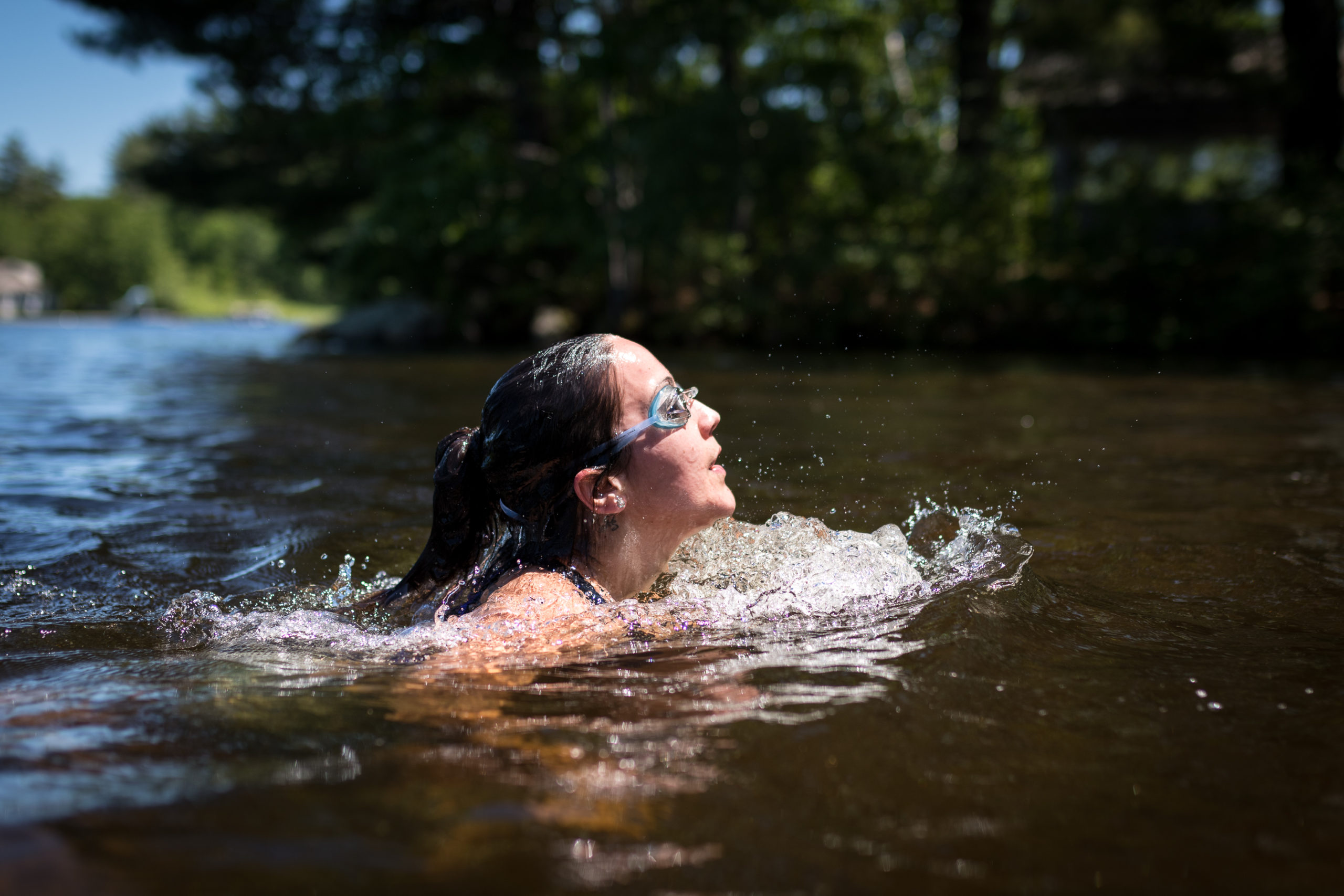
What benefits might you see from swimming more often?
Other than a brand new skill set, as laid out above, I believe swimming is a great compliment to a recovery protocol. Swimming, in general, is fairly unique when compared to a long slow “flush” on a bike, rower, or skierg. Typically, you have to keep the machine output very low to stay in prescribed heart rate zones which can actually be difficult and boring. While machines require use of the full body, they don’t have the same fluidity as freestyle swimming. I would dare say that swimming requires the most movement you can find in monostructural work and when we have that many moving parts your blood will have no problems circulating. I have noted on almost every occasion while in the water, even when moving steadily along, my heart rate seems to be significantly lower than when performing any of the other monostructural movement in an “equal perceived effort”. If all efforts are equal, running seems to be the highest consistent heart rate even in long, slow work. Running is followed closely by the Bike and Rower, then the Skierg, and lastly swimming. In a data sample across six months, swimming on average across all comparable efforts showed a heart rate of 20% less bpm.
Another factor that may increase your ability to recover is the potential temperature contrast that may occur going from air temp, to water temp, back to air temp. While it’s not in the same range as hot tub to cold tub, contrast is contrast, and your body needs it. I personally spent many Summer evenings going from 80-85 degree air temp, to 66-69 degree water temp for 12-25 minutes, back to air temp. This is subtle but worth mentioning.
I mentioned at the start that there was a potential to increase HRV (typically a good thing), and decrease your resting heart rate (also typically a good thing). The only problem is that I don’t have the slightest idea why this is consistently happening. All I can say is that from a limited sample size of myself and a few other athletes over the course of six months, on the evenings they swam long after a training session was over, all reported feeling really fresh and energetic the next day. By using “Whoop” (an advanced, detailed fitness tracker) I was able to monitor both their data and my own to see if our markers showed anything of interest. It was consistent, and I mean almost every single time, that the day’s first measurement of HRV and Resting Heart Rate (taken by Whoop during a short period before you wake up) showed to be improved from the day prior, even after a grueling training day. For me, an even more interesting note, if the day prior was a rest day and I did almost no physical activity, my recovery scores were worse than average even if I attained more than adequate sleep numbers. However, on rest days that I added in an evening swim, my numbers were almost always positively off the charts. This pattern went on for months and months while I trained for an Ironman race.
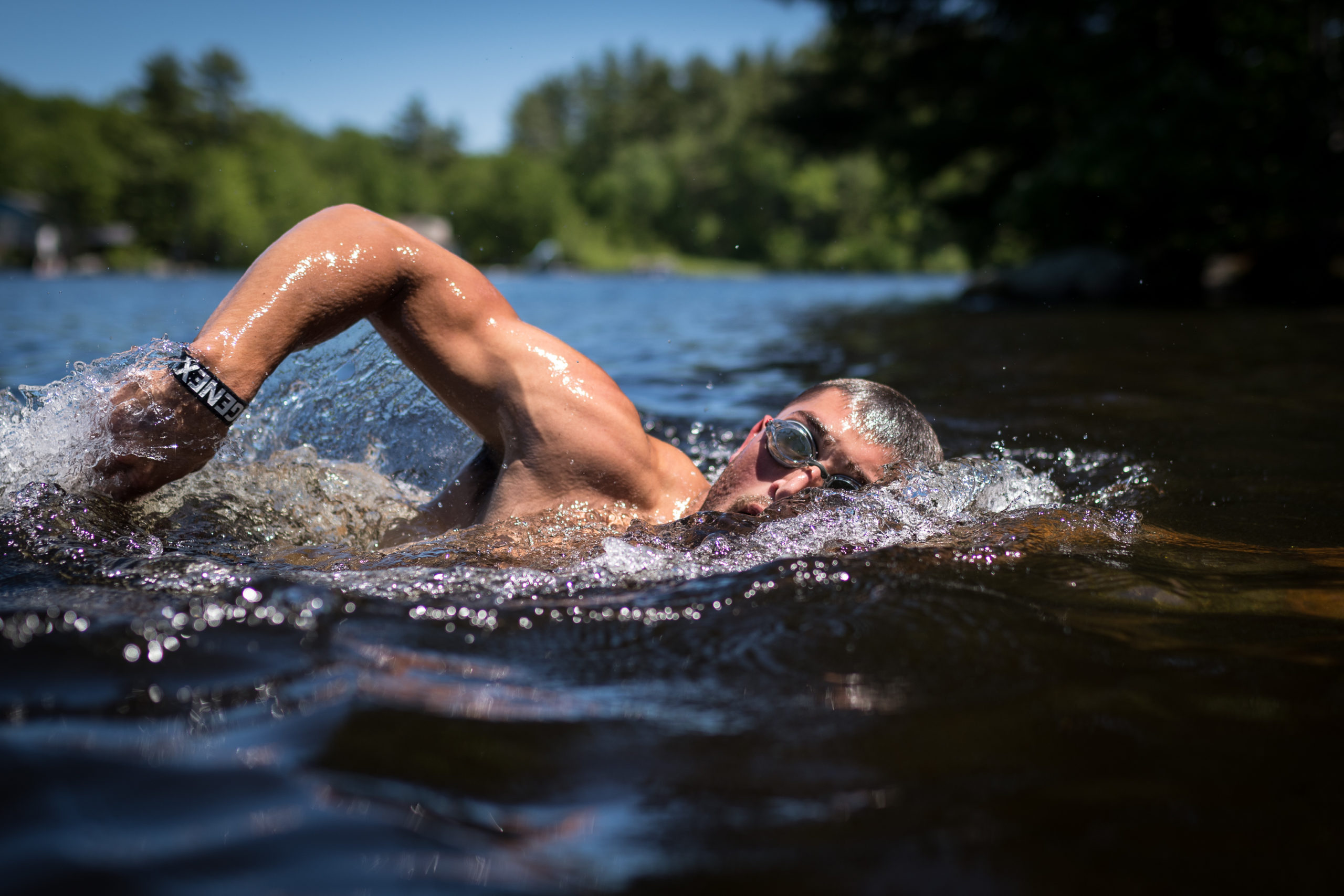
What do we know?
We know that in our world we should always be learning and playing new sports and that swimming is flat out neglected by the vast majority. This is a chance to be in the minority.
We know that after a tough training day flushing out our lymphatic system appears to help the body heal and recover faster. There is no way to deny that swimming is an acceptable means to accomplish this.
We know that athletes should move around even on rest days but lower volume and lower intensity should respected. Swimming is likely the greatest opportunity for you to learn a new skill, move through long range of motion, and continue to develop your aerobic system without burning yourself out in the least bit.
We know that we do not know everything! And that more athletes should not be afraid to step out of the box to find different styles of training that works multiple elements of their game. Swimming will not be a detriment at any point, so adding it in is worth a try.
What do I recommend?
1-3 days a week, most being post training in the evening/night time. A session is typically on the slow/steady side and should be 10-30 minutes. Feel free to break it up however you need. The goal would be to build the capacity to go non-stop smooth steady for 30 minutes on demand. Once you get there, you can add in speed and mix in other movements. It also can’t hurt to drag and experienced swimmer or coach along with you to give you a pointer or two. It can take the early frustration out of it quickly and allow you to focus on building your comfort level and pace.
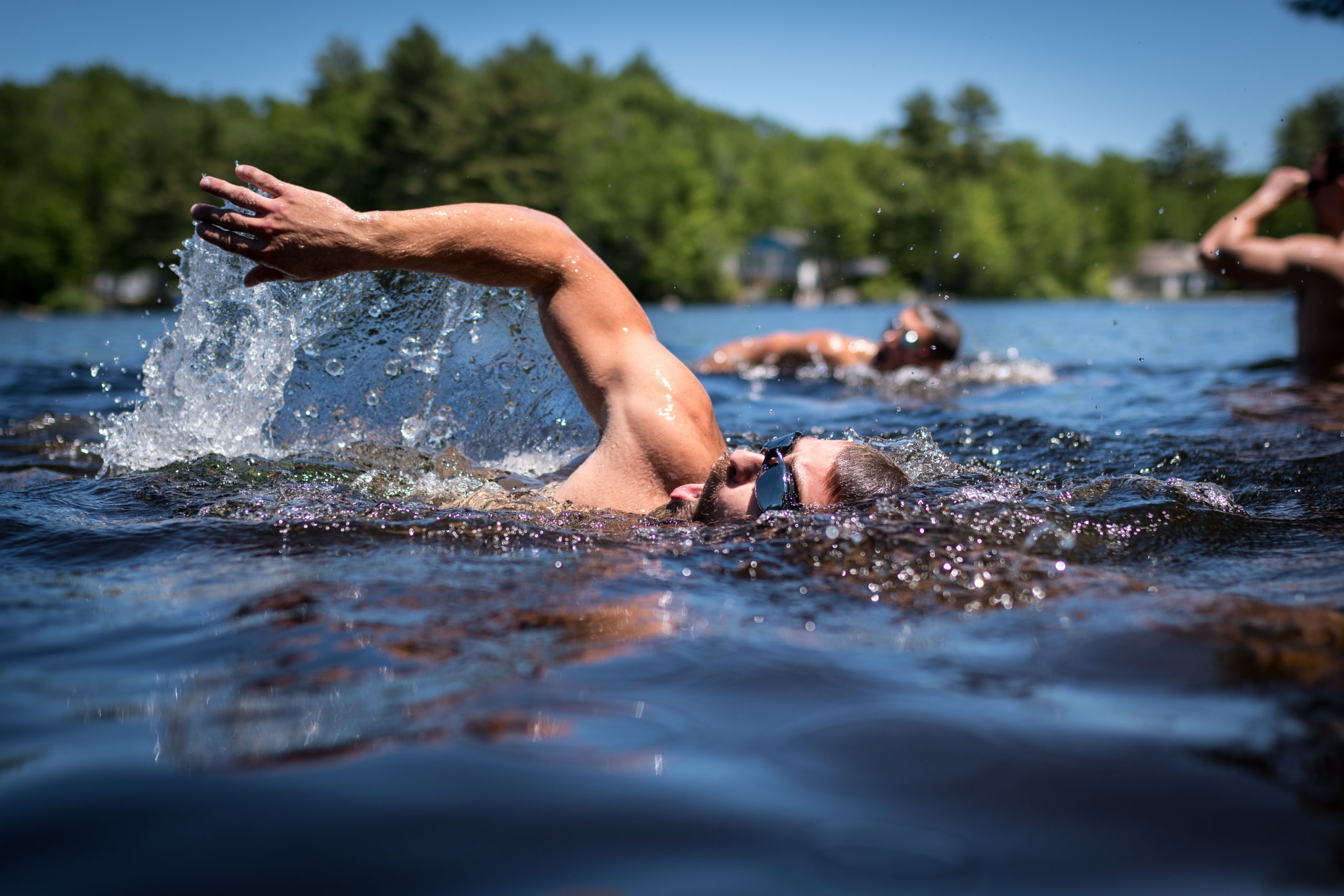
I leave you with this, my experience:
In March of 2017, I agreed to sign up for an Ironman 70.3 race with a buddy. The race would take place in August of that year. I had never done a Triathlon nor any of the distances in that race straight through before (the swim is 1.2 miles in the fucking freezing northern Atlantic Ocean). I was comfortable in the water but didn’t actually know how to swim anything but doggy paddle. In April I had my first swim session in a pool with two very experienced swimmers from my gym. It was so embarrassing. I couldn’t make it down and back in a 25m pool swimming freestyle without gasping for air and needing a break. I couldn’t figure out when to take a breath or when to stroke. They gave me a couple VERY basic things to work on and one said to me “Good news! You can’t possibly be any worse, so you’ll improve fast”.
I actually did take it as good news and just knew with every opportunity I could get in the water, I’d figure something out, or gain confidence, or just build some basic capacity. For the next few months, I practiced about 3 times a week in both pools and lakes. I only worked with a coach one more session of the 50 or so I got in before the race. I started to figure it out. I started to feel when to turn my body, when to breathe, when to stroke, how to stay horizontal in the water, and how to kick my legs correctly. I felt like it was all coming together about a month before race time. I knew I wouldn’t be fast compared to experienced Triathletes by any means, but I had to be able to swim 1.2 miles without needing rest, and that is a hell of a swim for somebody who couldn’t make it 50m just months prior. The day before the race I went down to check in where the event was being held. I got my credentials and immediately headed over to the Ocean to see the course. OH SHIT. The buoys went out to the damn horizon, took a sharp left, went straight almost as far as the eye could see, before turning left again heading back to shore. I also noticed the incredible amount of choppy water even though the weather was nice and clear. I figured I better swim out a couple buoys and swim back just to make sure everything was the same as practice. It wasn’t. About 4-5 minutes fighting the current, getting picked up and dropped over waves, my hands and feet were going completely numb in the 59-60 degree water and I had swallowed about a gallon of the ocean. I had a straight up panic attack. I laid on my back to breath and tried to kick back towards shore. I was unprepared for these conditions. I didn’t practice the elements correctly. I made it back to shore, composed myself for about 5 minutes, then decided I had two options; go back out there and figure it out or drop out of the race. I eventually went back out there and somehow calmed down at least a little bit. Swam for about 10 minutes (I finished about 10% of the swim course in that time), and came back to shore. The fear stuck with me all day and all night. The race kicked off the next morning at 6:00 am. I was on site at 4:30 am pacing around trying to stay warm and trying to figure out how the hell I was going to finish the swim in under the 1 hour 10-minute cap, or even just survive. Finally, my time had come, the horn goes off, I run into the water, and I immediately went back to everything I had practiced. Breath every two strokes on my left side, keep my legs straight and never stop my short fast kicks, and I’m moving. I’m fighting in the water with 2300 other Triathletes. People grabbing on to each other, swimming over each other, kicking each other in the face, it’s fucking combat, and it’s exhilarating. The whole swim was a blur and I got in and out of the water in about 42 minutes. Probably a 10-15 minute PR on that distance, in an Ocean, with thousands of rabid racers, without being able to feel my face, hands, or feet the entire time. If I can do it, you can do it. That is a fact.
